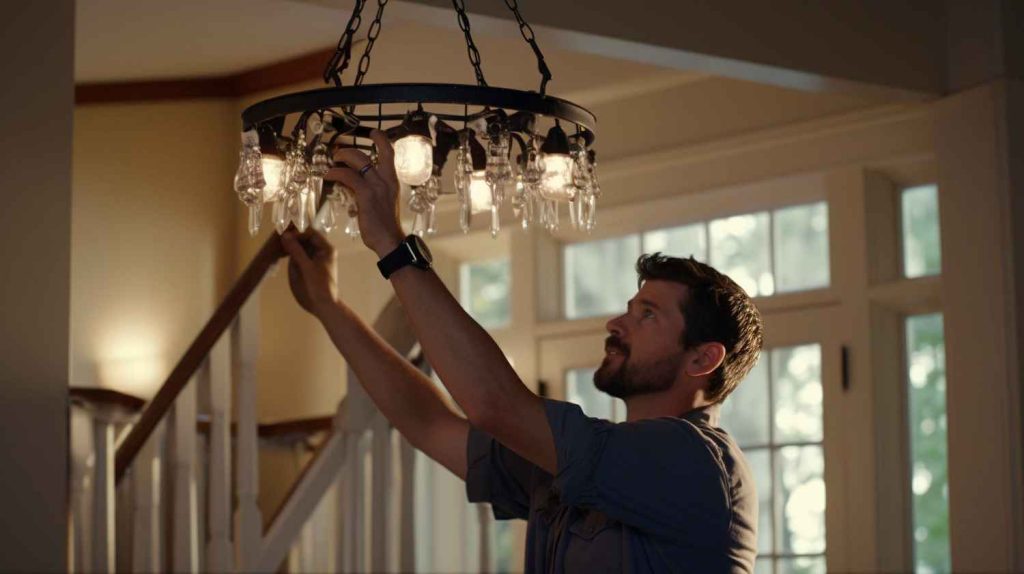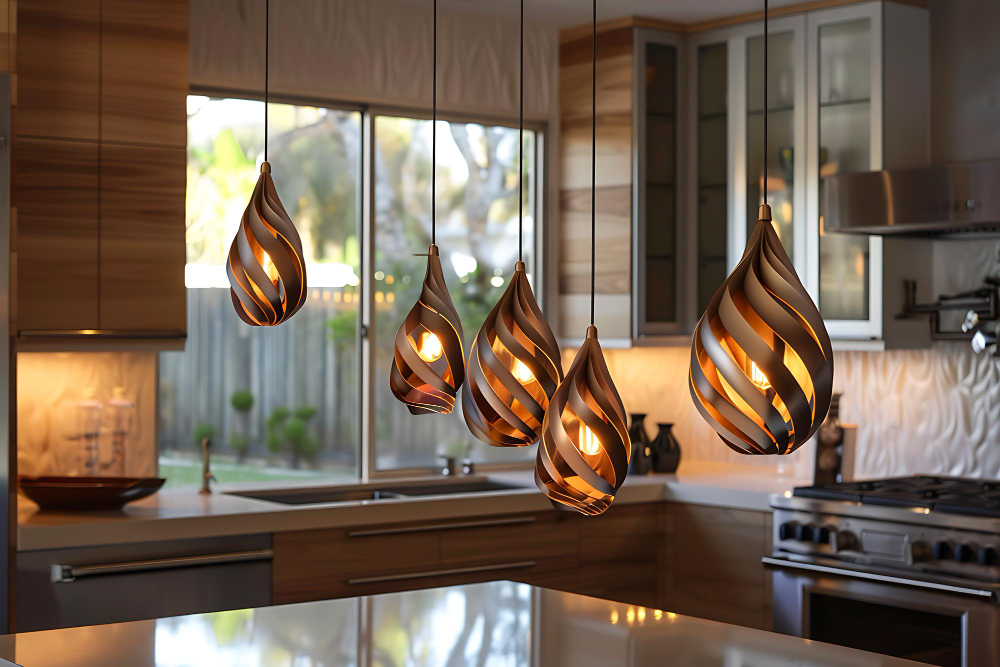Lighting sets the mood of a space, transforming it from ordinary to extraordinary. Whether designing a cosy nook or an expansive open-plan area, developing a lighting plan is essential for achieving balance and functionality.
To master illumination, first understand your space and consider how natural light varies throughout the day to identify where extra lighting is needed. Next, identify key areas that require focus, such as workspaces or relaxation corners. Assessing these elements allows for a well-rounded approach to developing a lighting plan tailored to aesthetics and functionality. This guide covers the basics of lighting design to help you create beautiful and functional spaces. Let’s illuminate your home with purpose and style!
Understanding Lighting Design Basics
Lighting design is a crucial aspect of interior spaces that can dramatically influence mood and functionality. It involves carefully selecting light sources, styles, and placement to create desired environmental effects.
To truly excel in lighting design, it’s vital to grasp the three essential types: ambient, task, and accent lighting. Each plays a crucial role in enhancing your space—ambient lighting sets a warm, welcoming atmosphere, task lighting ensures you can comfortably perform specific activities, and accent lighting beautifully showcases your favorite architectural features or artwork. By thoughtfully balancing these elements, you can create a stunning and functional lighting plan that transforms any environment.
Types of Lighting Needed
Different activities require different illumination levels. For instance, task lighting is crucial in home offices and kitchens, while ambient lighting creates a cosy feel in living areas.
Ambient Lighting
Ambient lighting is essential for creating a warm and inviting atmosphere in any space. By using carefully selected ceiling-mounted fixtures, such as elegant chandeliers and sleek recessed lights, along with thoughtfully placed table and floor lamps, you can transform your room into a welcoming haven.
- It ensures even and balanced illumination throughout the area.
- You can consider stylish options like overhead fixtures, chandeliers, and recessed lights to elevate your decor.
- It helps to creates a warm and inviting atmosphere that encourages relaxation
Task Lighting
Task lighting is essential for completing reading, cooking, or desk work. Identify areas where task lighting is necessary and plan for focused and adjustable fixtures, such as desk lamps or under-cabinet lights.
- It is an intensive lighting for precise activities.
- Used in areas where additional brightness is needed for functions such as reading, cooking, or desk work.
- Examples: table lamps, under-cabinet lights, and pendant lights
Accent Lighting
This type of lighting is specialised in highlighting specific features or objects in a room, like artwork. When planning a lighting design, start by considering each room’s purpose. This type of lighting
- Highlights key features in a room and adds visual interest.
- The track lighting, wall sconces, and picture lights are some of the accent lighting examples.
Starting Points for Developing Your Lighting Plan
Determine the purpose of each room or space: Are you looking to create a relaxing atmosphere in the bedroom or a bright and functional workspace in the home office?
Consider Natural Light Sources: Take note of windows or skylights and how they affect lighting needs.
Identify Task Areas: These are locations where specific lighting is necessary for activities like reading or cooking.
Think About Mood and Ambience: Decide if you want your lighting to be warm and cosy, cool and invigorating, or somewhere in between.
Choose Lighting Fixtures That Match Your Style: Whether you favour modern, traditional, or a blend of both, there is a wide range of lighting fixture styles available.
Utilise Layers of Light: Combine various types of lighting, such as ambient, task, and accent lights, to achieve a well-balanced and functional space.
Think About Energy Efficiency: Opting for LED bulbs and fixtures can help you save money on energy bills over time.
Remember Dimmers: Dimmer switches allow flexibility and help set the right mood for any occasion.
Think About Placement: Install overhead lights evenly throughout the room for general illumination. Position task lights near work areas.
Importance of Layered Lighting

Layered lighting is key to designing an inviting and adaptable atmosphere in any space, enhancing both comfort and functionality. By incorporating different types of lighting—ambient, task, and accent—you can enhance functionality while adding depth to your design.
This approach allows you to adjust brightness levels based on activities or moods. For example, bright task lighting is perfect for cooking, while soft ambient light creates a cosy, relaxing environment. Layered lighting elevates aesthetics and improves the overall experience within your home.
Room-by-Room Lighting Design Tips
Creating an effective lighting plan requires attention to each room’s unique needs. Such as, in bathrooms, bright overhead lights and soft task lighting near mirrors enhance functionality while maintaining a soothing atmosphere.
Bathrooms
Bathrooms require both functionality and ambience. Start with bright, focused lighting around the vanity to ensure clear visibility for grooming tasks.
Enhance your experience by installing recessed lights or elegant wall sconces on either side of the bathroom mirrors. Soft lighting not only adds style but also creates a soothing atmosphere that transforms bath time into a truly relaxing retreat. A dimmable light fixture above the tub or decorative pendant lights can enhance comfort.
Living Rooms
A brightly lit living room creates a warm and inviting atmosphere. Begin by using ambient lighting to illuminate the space. You can achieve this with ceiling fixtures or recessed lights. Layer this with task lighting, such as floor lamps for reading corners or table lamps on the side.
Accent lighting is an ideal solution for living rooms, highlighting artwork and architectural features and adding depth to your designs. Use dimmers to adjust the mood for different occasions—from lively gatherings to cosy movie nights—ensuring your living room remains versatile and functional.
Open-Plan Kitchens
Open-plan kitchens benefit from a thoughtful lighting design that enhances functionality and ambience. Pendant lights over an island or dining area offer focused illumination and add style.
Enhance your kitchen experience by incorporating under-cabinet lighting. This solution brightens work surfaces efficiently and eliminates harsh shadows, making your tasks easier and more enjoyable. Additionally, track lighting can be adjusted to highlight artwork or decorative elements in your kitchen, ensuring every corner is well-lit and inviting.
Bedrooms
When designing lighting for bedrooms, prioritise comfort and relaxation. Soft, warm light creates the ideal and soothing atmosphere for winding down. Consider bedside lamps with dimmers whose brightness can be adjusted according to your mood.
Layered lighting is crucial in a bedroom. Incorporate ambient lights like ceiling fixtures, task lights for reading, and accent lights that highlight artwork or décor. A balanced approach enhances functionality and aesthetics while fostering a peaceful retreat from daily stressors.
Implementing a Decorative Lighting Plan
Implementing a decorative lighting plan is the final touch that can elevate your space. Choose desired fixtures and harmonise them to reflect your style and standard with your overall design theme. Consider statement pieces like chandeliers or pendant lights to draw attention in key areas. A well-thought-out decorative lighting plan enhances ambience and comfort. Your efforts in developing a comprehensive lighting design will transform any area into an inviting environment that captures the essence of your style and meets practical needs






